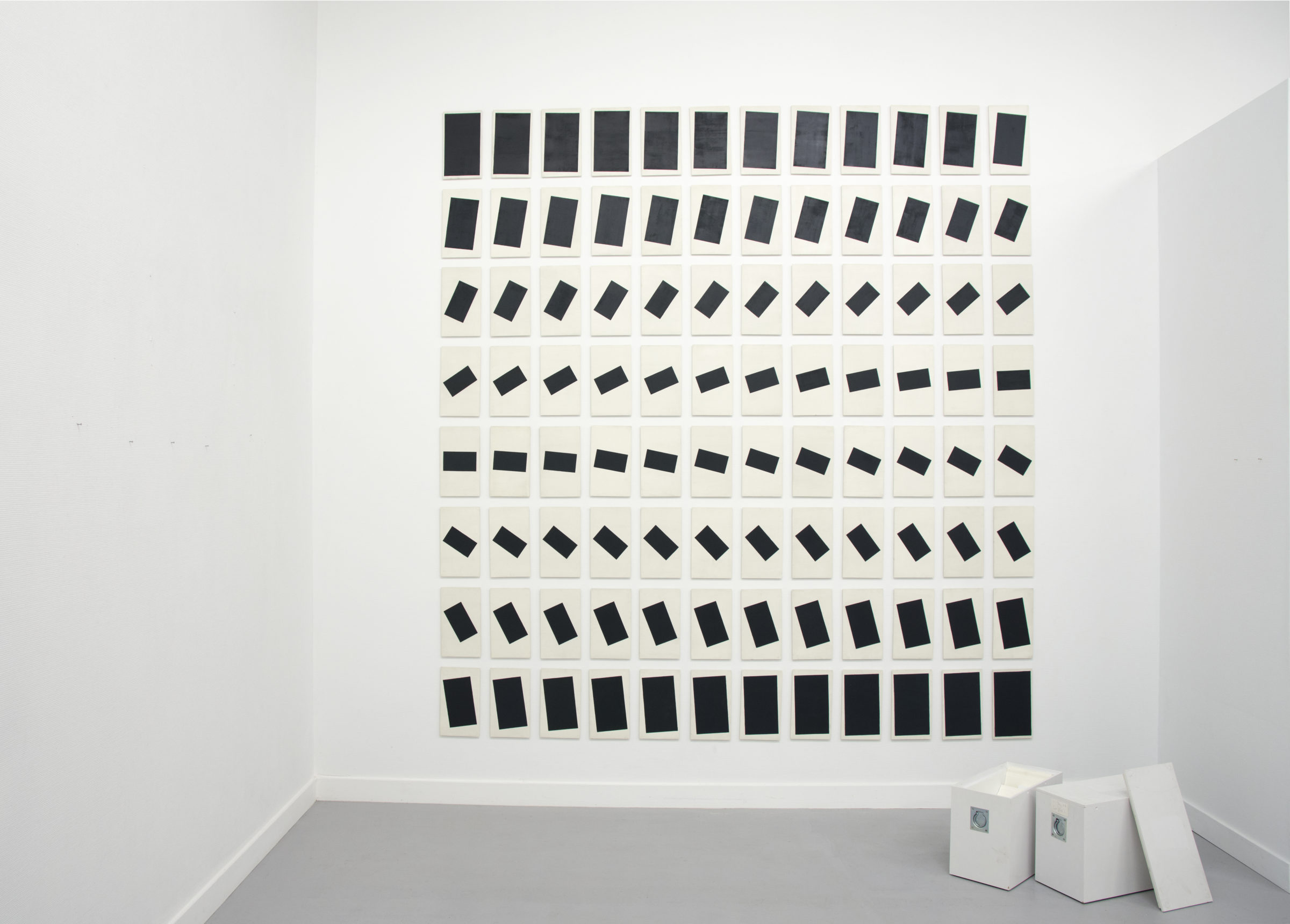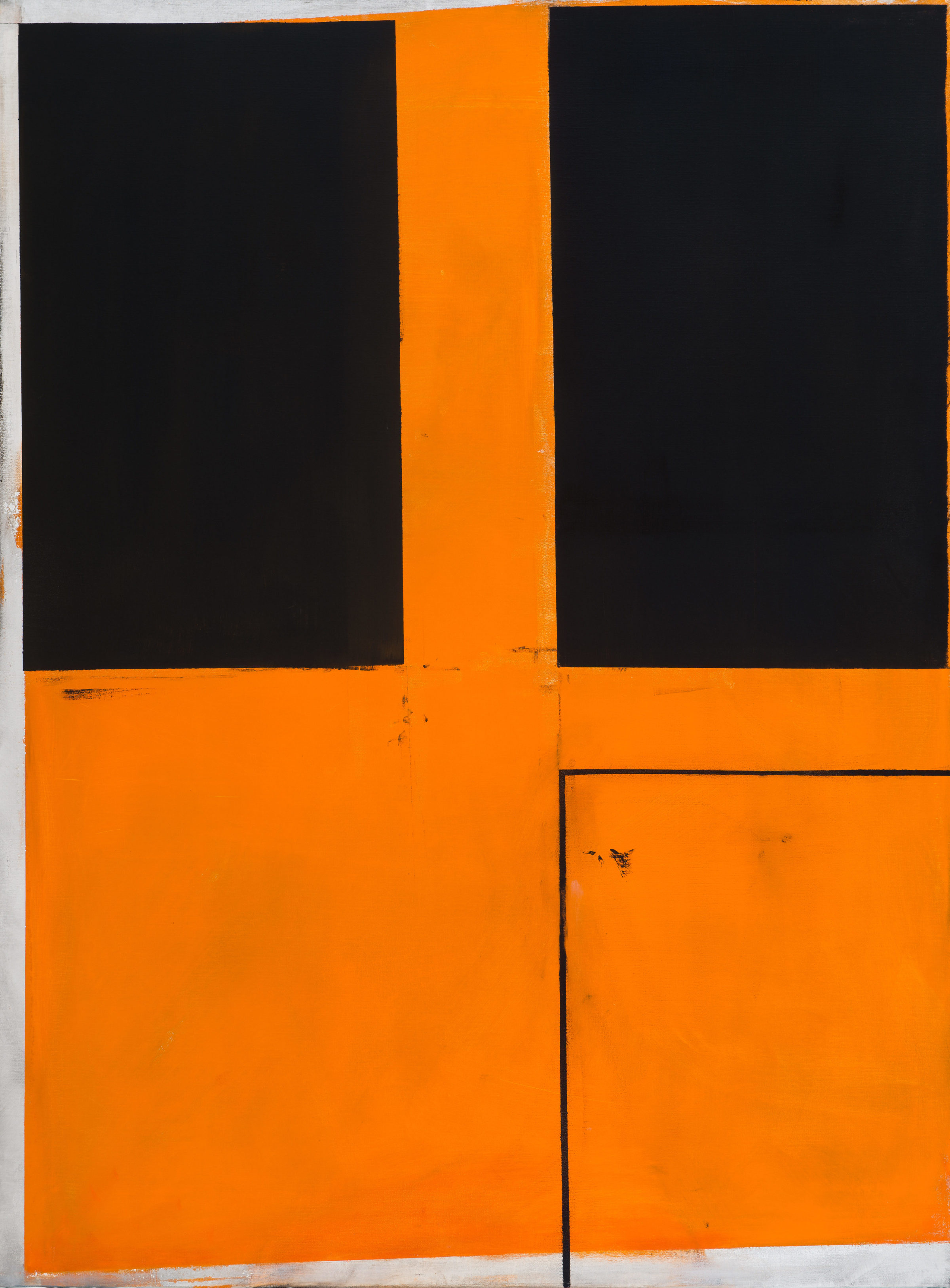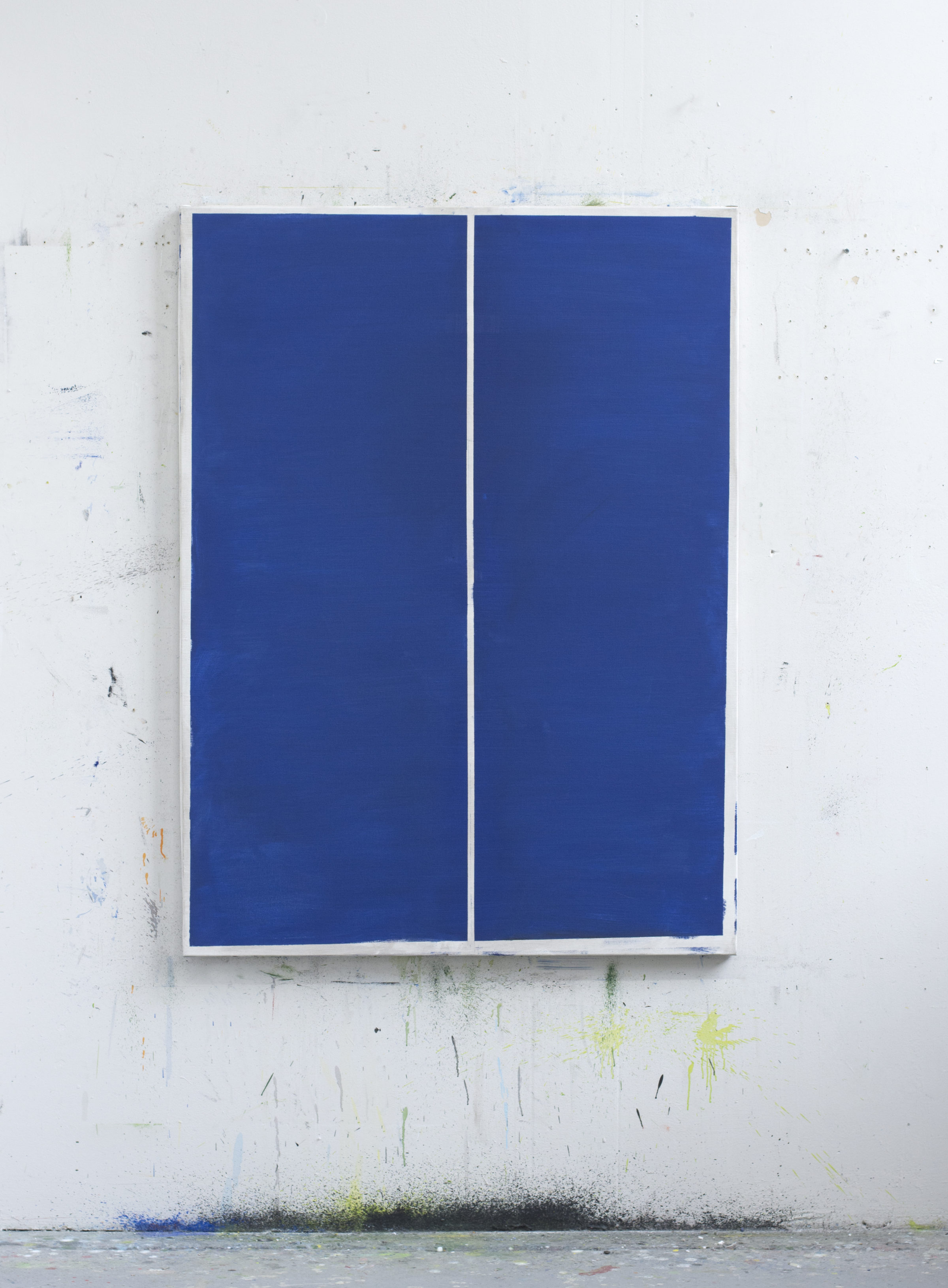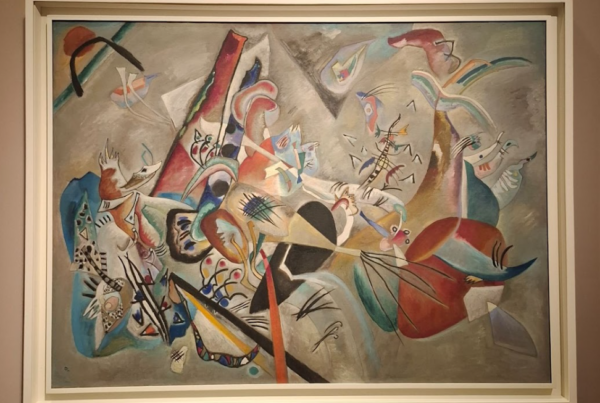
How does art relate to the space it finds itself in? Where does the artwork end and where do its surroundings begin? These are some of the questions Dolf Verlinden (1960) attempts to answer in his work. After graduating from the Minerva Academie Groningen in 1984 he started developing a fascination for the way art relates to the space surrounding it. His work is mostly abstract, characterized by the use of sharp lines and rectangular shapes.

In his work Verlinden seeks to explore the value of art in relation to the space around it. He finds beauty in the proportions and structures as seen in nature and uses abstract shapes to recreate this beauty in his own work. Many of the proportions used in his work originate from the Golden Ratio, a ratio commonly found in nature that, when used in compositions, makes them aesthetically pleasing to look at.

One of his most defining artworks is ‘Kantelmoment,’ an installation comprised of 96 canvasses with tilting rectangles printed on them. It literally depicts a tilt and symbolises a turning-point in his career as well: from this moment onwards, Verlinden would abandon the use of frames in his work, as these frames would separate the artworks from the world around them. His works nowadays blend in with the space surrounding them, in a way making the visitors of his exhibitions part of the artwork too. The answer to the question where Verlinden’s work stops and the surroundings begin is one each of his visitors must answer for themselves.

The exhibition Dolf Verlinden is on display until September 1st, 2019 at the Groninger Museum, Groningen.
About the artworks
Picture 1
Dolf Verlinden
Crippled Symmetry I, 2018
Olieverf op linnen
127 x 95 cm
Picture 2
Dolf Verlinden
Crippled Symmetry II, 2018
Olieverf op linnen
127 x 95 cm
Picture 3
Dolf Verlinden
Kantelmoment, 2012
Olieverf op hout
(96x) 33 x 19 cm
How does art relate to the space it finds itself in? Where does the artwork end and where do its surroundings begin? These are some of the questions Dolf Verlinden (1960) attempts to answer in his work. After graduating from the Minerva Academie Groningen in 1984 he started developing a fascination for the way art relates to the space surrounding it. His work is mostly abstract, characterized by the use of sharp lines and rectangular shapes.

In his work Verlinden seeks to explore the value of art in relation to the space around it. He finds beauty in the proportions and structures as seen in nature and uses abstract shapes to recreate this beauty in his own work. Many of the proportions used in his work originate from the Golden Ratio, a ratio commonly found in nature that, when used in compositions, makes them aesthetically pleasing to look at.

One of his most defining artworks is ‘Kantelmoment,’ an installation comprised of 96 canvasses with tilting rectangles printed on them. It literally depicts a tilt and symbolises a turning-point in his career as well: from this moment onwards, Verlinden would abandon the use of frames in his work, as these frames would separate the artworks from the world around them. His works nowadays blend in with the space surrounding them, in a way making the visitors of his exhibitions part of the artwork too. The answer to the question where Verlinden’s work stops and the surroundings begin is one each of his visitors must answer for themselves.

The exhibition Dolf Verlinden is on display until September 1st, 2019 at the Groninger Museum, Groningen.



